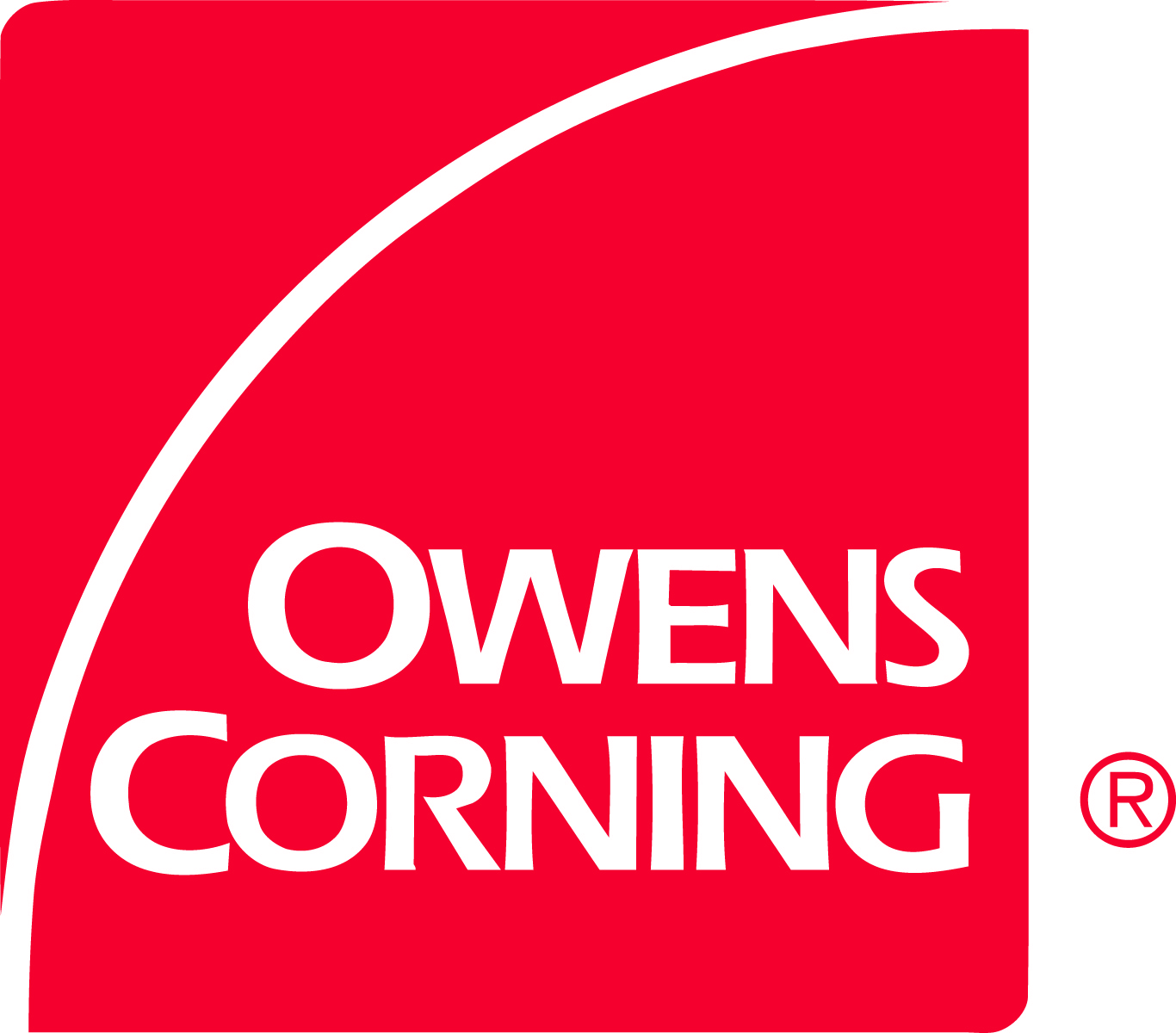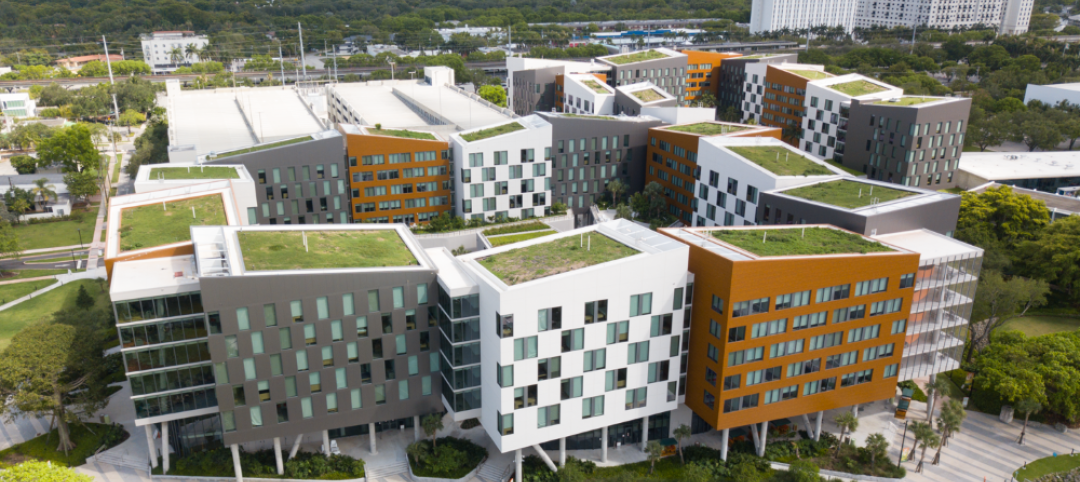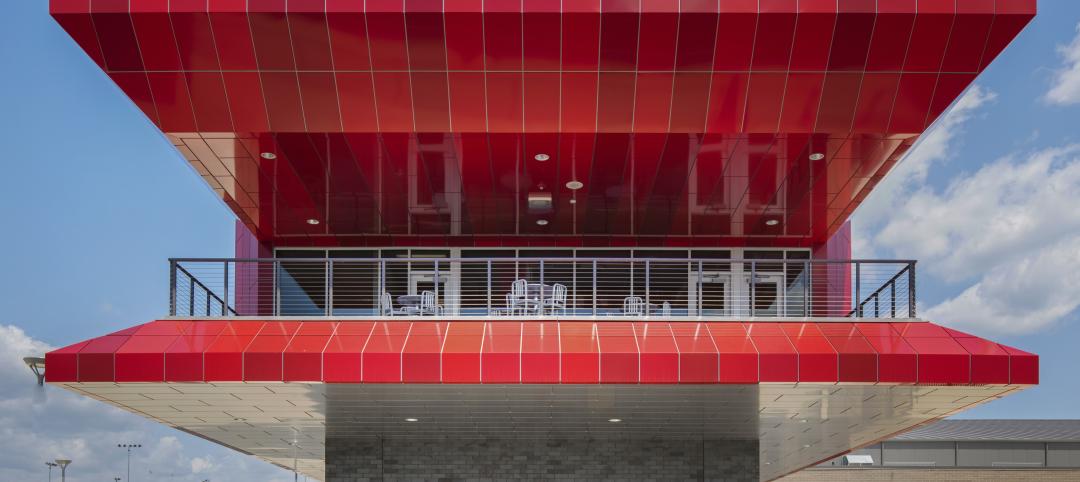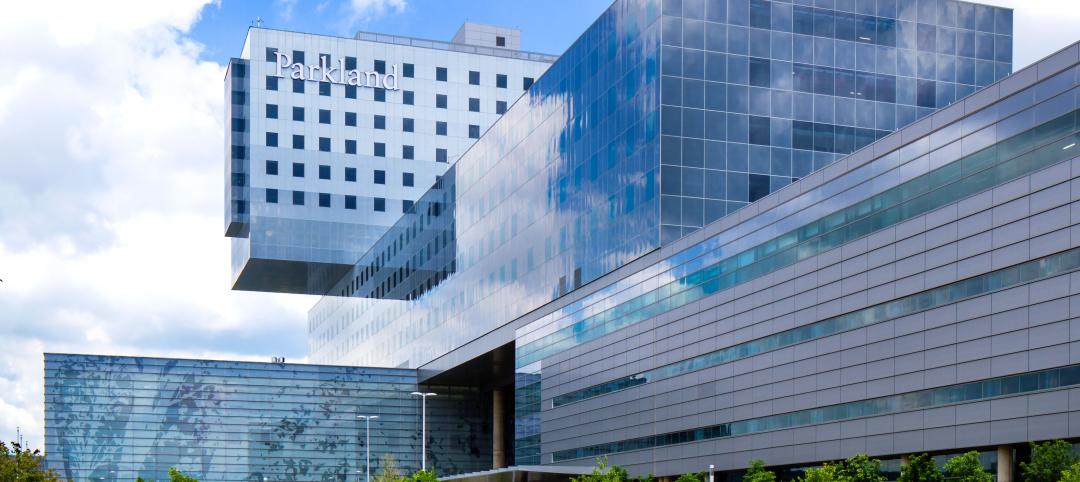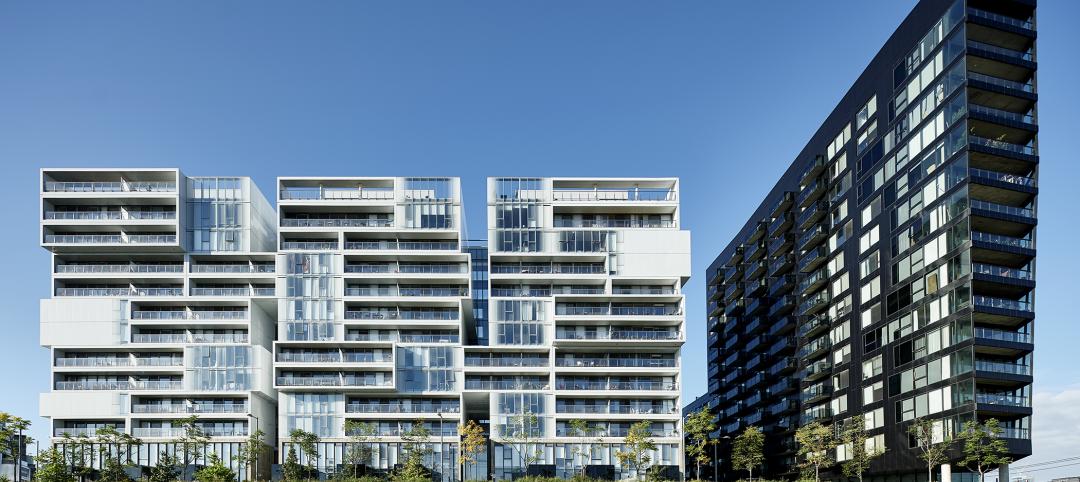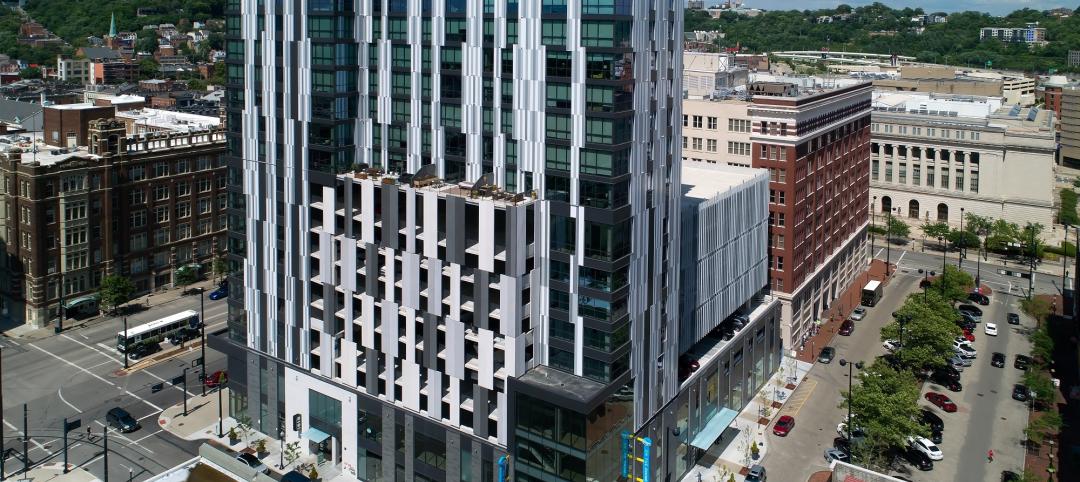Across climate zones, rising codes are increasing awareness of the role continuous insulation (ci) plays in helping buildings meet and exceed energy efficiency thresholds. But while thermal efficiency is a key function of ci in exterior walls, its benefits extend far beyond mitigating thermal bridging. The type of ci matters. Below, we look at how mineral wool insulation’s composition, engineering, and performance properties make it a smart choice in exterior assemblies – including supporting sustainability, mitigating liquid and vapor moisture, contributing to life safety, and even helping keep outdoor noise from travelling through the wall.
- Sustainability Profile: Comprised of byproducts from steel manufacturing, mineral wool insulation generally contains 70% or more recycled content. Its primary ingredients are limestone and iron ore, along with a binder. After just one month of use, a pound of mineral wool insulation can conserve the same amount of energy consumed in its manufacture.
-
Moisture Resistance: A high-performing building must be able to effectively manage liquid moisture as well as vapors. Additionally, the wall must be able to effectively navigate the flow of moisture regardless of its directional path and keep it from condensing in the wall cavity. With a minimal sorption of just 0.03%, Thermafiber® RainBarrier® insulation stands up to the demands of humidity, even in the harsh, hot, and humid environmental conditions measured by ASTM C1104 (120°F, 95% humidity for 96 hours). Such impressive resistance to moisture indicates consistent thermal performance during the expected service conditions of the thermal insulation. Additionally, the sorption property is consistent throughout the entire thickness of the mineral wool ci. Owens Corning evaluated Thermafiber® RainBarrier® 45 insulation using ASTM C518viii for thermal performance in extreme conditions beyond normal exposure in a cavity wall assembly. After 88 hours of submersion and subsequent draining, the samples dried out, and they exhibited no change in resistance to thermal conductivity. While extreme, this test demonstrates mineral wool’s resiliency when exposed to liquid moisture.
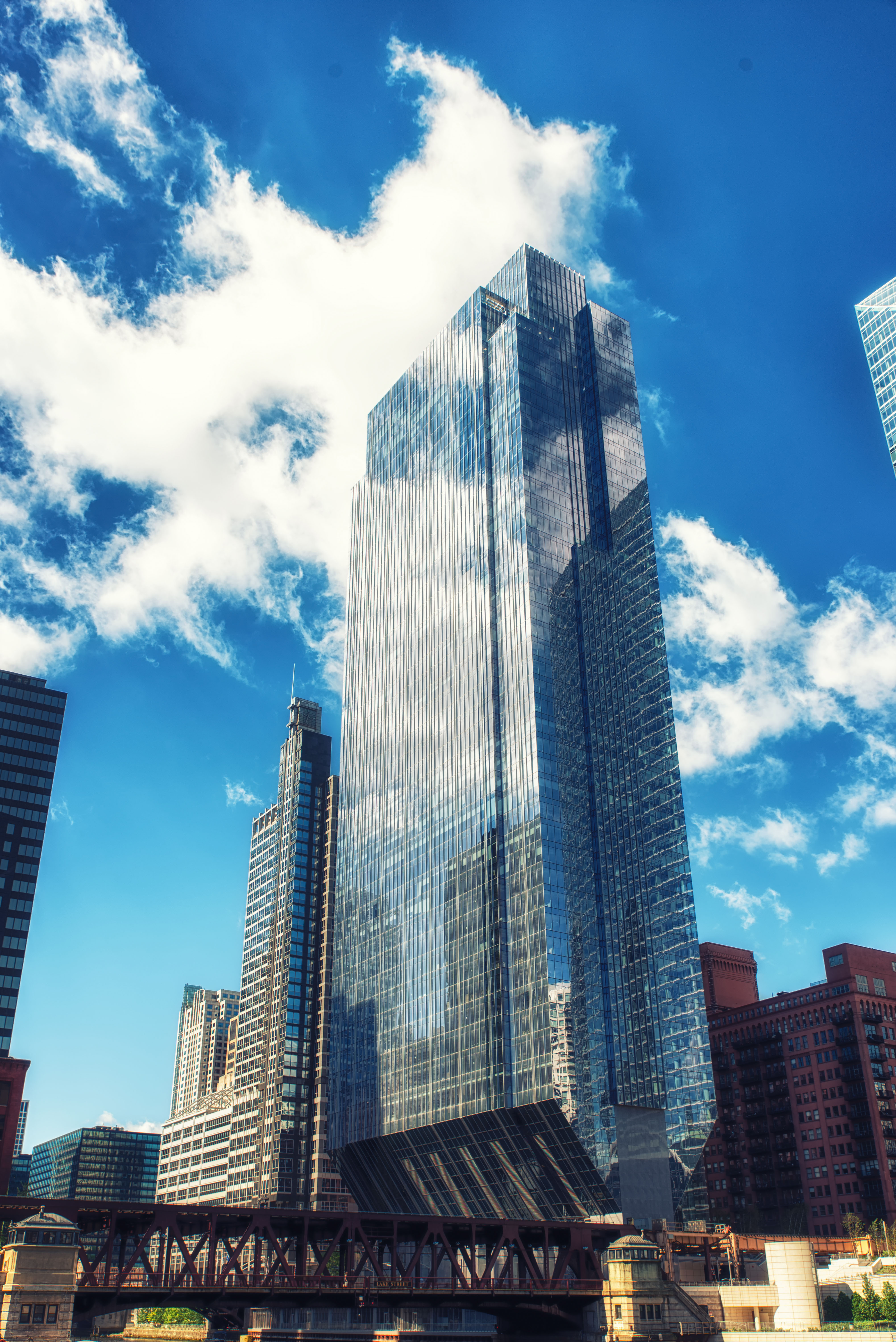
- Resilient: A demonstrated ability to withstand exposure to UV light, sleet, and rain makes mineral wool a resilient ci choice, even under prolonged exposure during construction or intermittent exposure in open-joint cladding systems. The Museum of the Moving Image in New York is a good example of resilience in action. Mineral wool in the museum’s unique open-joint assembly was exposed to the elements for nine months during one of New York City’s harshest winters on record, without compromising its properties. Used as a continuous insulation in the Sidney & Lois Eskenazi Hospital in Indianapolis, Thermafiber® RainBarrier® insulation lived up to its name as it withstood the Midwest’s fierce rainstorms during the hospital’s construction.
-
Life Safety Solutions: Life safety is always a driving factor when it comes to building design. The ASTM E119 time and temperature tests show that mineral wool outperforms foam, glass, and aluminum. In testing, mineral wool did not combust, even when exposed to temperatures exceeding 2,000°F for five hours – the upper limit of the testing period. Whether designing perimeter fire containment systems, fire rated wall assemblies, or NFPA 285 compliant assemblies, mineral wool, as a noncombustible material, can help meet the life safety requirements. Safety also goes hand in hand with reputation management for the professionals who specify life safety systems. In 2017, the U.S. Department of Homeland Security created the SAFETY Act. This designation provides protection against liability related to acts of terrorism. The protection serves both architects and building owners. Owens Corning is honored to be the first insulation manufacturer to receive this designation. While testing standards provide all-important verification that a material has withstood rigors imposed on a material under controlled conditions, a material’s performance in the “real world” provides practical assurance. Thermafiber® mineral wool insulation is trusted in several of the world’s most high-profile buildings – including four out of five of the tallest buildings in North America.

- Acoustically Agile: Today’s buildings are increasingly agile. Consider the global pandemic which saw convention spaces being transformed into makeshift hospitals and amplified the use of telemedicine. A building’s acoustics may suddenly demand a higher level of privacy or relative quiet, demanding enhanced acoustics. Attention to acoustics at the outset can help guard against costly renovations or marginally effective sound masking approaches. Wall design and the materials inside the assembly have a big impact on how sound is transmitted through a space. Designers have various insulation options when it comes to insulation materials used in the assembly. While fiberglass batt insulation has traditionally been widely used to reduce noise, research has shown mineral wool insulation offers similar sound transmission class performance depending on the wall assembly. For example, some studies have shown that a wall with lightweight drywall insulated with mineral wool can provide comparable acoustic performance to an assembly with standard weight drywall and fiberglass insulation.
- Thermal Performance: Finally, insulation is integral to supplementing the important thermal protection stud cavity insulation delivers in the exterior assembly. Steel framing and other materials behind the cladding can reduce thermal performance through thermal bridging. As ci is described in ASHRAE Standard 90.1, adding ci helps deliver a continuous and virtually uninterrupted layer of insulation that extends across all structural members with the exception of fasteners and service openings. Whether an architect is following a prescriptive path, performance path, or energy/cost budget path to meet energy objectives in an assembly, ci can help increase the R-value per inch of insulation. Minimizing the number of penetrations in a material is essential to preserving its thermal performance. A variety of attachment methods are available to install mineral wool as a ci in the exterior assembly. These options help further mitigate thermal loss through the continuous insulation.

When it comes to meeting rising energy codes and other performance goals, it’s not a matter of simply adding insulation, but adding the right insulation solution for the building application and environment. Considering the entire ecosystem of a building can help inform a smart insulating decision that will drive the optimal performance outcome. Thinking of buildings through the lens of smart, integrated systems and deploying the proper insulating materials can help architects manage the complex and sometimes competing demands posed by today’s buildings and codes. At the end of the day, achieving high-performing buildings is all about how the performance variables -- including thermal, life safety, and moisture mitigation systems -- work together.
For more information, please visit www.owenscorning.com/rainbarrier.
Owens Corning 2020. All rights reserved.
Related Stories
Sponsored | Voice of the Brand | May 1, 2024
Designs Inspired by Timber with Less Limitations
Explore new possibilities in your design with the natural look of wood, without the weight, maintenance difficulties, or expense. Three projects, featuring ALPOLIC’s Timber Series, highlight how metal composite materials provide beautiful, durable and safe solutions with a look so real, you’ll look twice.
Sponsored | Voice of the Brand | Jun 5, 2023
Sustainable, Award-winning Design gives New Life to Parkland Hospital
Built in 1954, the Dallas Parkland Hospital had become severely overcrowded and outdated. The largest public healthcare project in the country to be built in one phase, this AIA award-winning, LEED Gold project doubled the size of the old facility. This remarkable design incorporates over 4.5 acres of ALPOLIC MCM.
Sponsored | Voice of the Brand | Mar 31, 2023
Considerations When Specifying in Extreme Weather Zones
Why Choose an IMP in an Extreme Weather Zone?
Sponsored | Voice of the Brand | Jul 29, 2022
River City: A New Gateway for the City of Toronto Clad in ALPOLIC MCM
Versatile and sustainable, ALPOLIC® MCM helped redefine the cityscape in an area of Toronto most in need of urban redevelopment. A project 15 years in the making, the abandoned industrialized zone by the West Don Lands has been transformed into something inspirational.
Sponsored | Voice of the Brand | Jun 1, 2022
High-Rise Buildings Stand Out with High-Style Metal Cladding
Metal wall panel systems provide a cost-effective, attractive solution for high-rise buildings.
Sponsored | Voice of the Brand | Jan 27, 2022
A Modern Approach to Labor in the Construction Industry
The COVID-19 pandemic disrupted and reshaped norms in the workforce and the ongoing labor shortage can be felt in every industry. Innovations to go faster, maintain safety, minimize learning curves, and drive down costs are becoming imperatives for companies to stay competitive in the construction industry.
Sponsored | Voice of the Brand | Dec 2, 2021
How Creativity Takes Shapes
Architects charged with developing new buildings are increasingly seeking ways to stretch the limits of their creativity while also delivering on durability and long-term performance when it comes to the building envelope. With a host of engineered building enclosure systems, Sto® serves as a key partner in this endeavor.
Sponsored | Voice of the Brand | Nov 18, 2021
The Beauty is in the Details
Color capabilities with Sherwin-Williams Coil Coatings are nearly limitless. Our line of Fluropon® coil and extrusion metal coating systems let our customers explore new color spaces using a wide array of gloss, effects and print options. With over 50,000 colors offered, we can color match almost any look you dream up.



